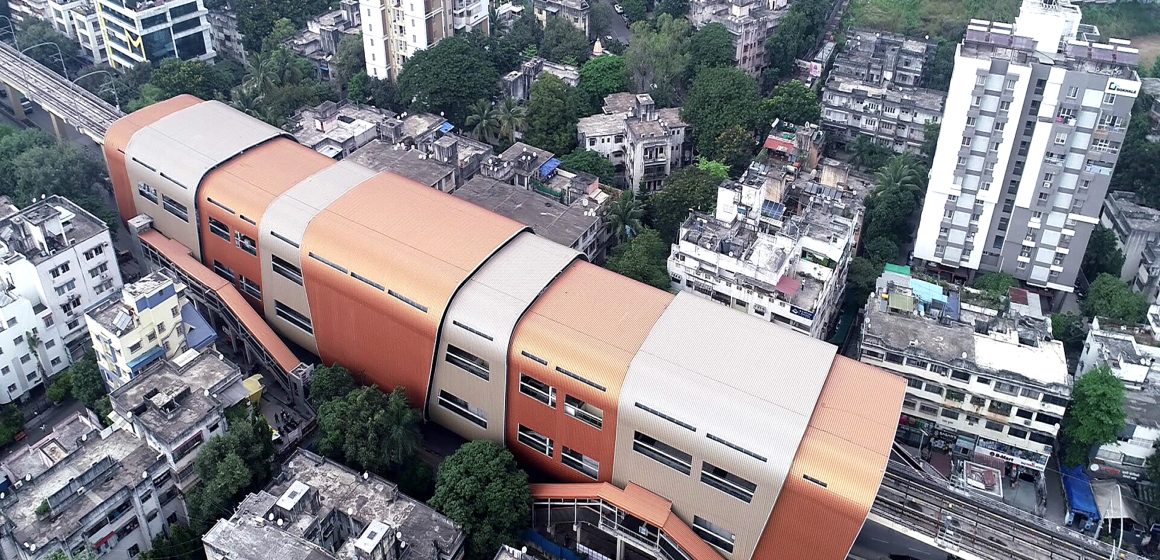From Olympic stadiums to metro terminals, Priya Rajesh explains why coated steel is fast becoming the backbone of next-gen infrastructure.
The global infrastructure landscape is steadily evolving. Landmark structures, once marked by sedate, utilitarian designs, are now being reimagined as architectural icons, blending functionality with aesthetic excellence. In this changing paradigm, the role of coated steel is undeniable. It has discreetly emerged as the benchmark for developing modern, sophisticated designs, which are built to last.
The inherent ability of coated steel to lend a distinctive identity to key public structures, such as airports, grand stadiums, or bus and railway terminals, has made it an integral part of the construction of transformative and iconic architecture.
The Coated Power
Today, infrastructure has moved beyond being utilitarian and is characterised by boldness and its ability to make a statement. It provides architects with an incredible canvas to realise their vision with their signature designs.
Complex projects often involve unconventional architectural geometries and require adaptive solutions. This complexity is facilitated by the superior formability and dimensional stability of coated steel, which enables architects to design without compromise. In contrast to traditional roofing and cladding solutions, coated steel provides a premium finish, structural performance, and a clean and effortless installation process.
It also offers a wide selection of colours and textures, empowering architects and planners to design visually striking structures that reflect the identity and character of the different public spaces.
Lessons from the World
Take any iconic structure built in the recent past, and you are sure to find coated steel there. The Bird’s Nest Stadium—also known as Beijing National Stadium—is the largest in China’s capital. It served as the site for the 2008 Summer Olympics. The complex outer shell of the stadium resembles a bird’s nest and is made of high-quality coated steel, giving it a striking and unique visual aesthetic.
The metro rail stations in Dubai are defined by a vast, column-free steel shells wrapped in a double-skin façade that pairs aluminium panels with corrosion-resistant coated steel. This envelope not only reinforces the structure’s sweeping form but also enables solar-assisted natural ventilation that cools the roof efficiently. The entire design was inspired by the emirate’s maritime heritage, which translated excellently into a striking, climate-responsive landmark.
The Malaysian Academy of Han Studies (MAHS) is a private non-profit educational institution located in the historic city of Melaka in Malaysia. MAHS’ design is inspired by the traditional Malaysian roof with inverted Chinese historical architecture. The iconic structure uses minimal partitions and louvre walls to capture natural light and ventilation.
The versatility of coated steel is seen in the strong waving structure and the curvature of the roof. It is yet another example of coated steel being deployed to fully express the beauty and functionality of landmark infrastructure, as it stands as a symbol of modernity and elegance.
At home in India, the Pune Metro stations draw from local cultural motifs and natural elements, most notably the lotus, which symbolises purity and rootedness. Coated steel plays a central role in expressing this inspiration, used extensively in roofing and façades to create petal-like forms with a clean finish. The use of vibrant, locally resonant colours in pre-painted steel panels adds visual identity to each station, while the material’s durability and thermal performance ensure resilience against Pune’s changing climate.
Together, these global examples showcase the immense versatility of coated steel; but what do they reveal about how infrastructure must evolve in the years ahead?
Today’s Designs for Tomorrow
One of the primary goals of contemporary nation-builders is to design and construct structures that are both sustainable and environmentally friendly. At the same time, they must be designed to stand the test of time. Coated steel addresses both these needs, offering durability against the harshest weather conditions while being entirely recyclable.
Coated steel is the preferred choice for constructing future-ready infrastructure. Modular structures built with coated steel offer the flexibility to expand or redesign with ease, allowing them to adapt to changing structural requirements without the need for significant demolition or disruption.
As India and the world transition to sustainable building materials, coated steel is helping accelerate this shift. It is enabling the next generation of infrastructure, from striking metro stations to Olympic landmarks. The ability of coated steel solutions to combine aesthetics, adaptability, and durability is truly setting the benchmark for modern design and construction in the world’s evolving urban and rural landscape.
ABOUT THE AUTHOR

Priya Rajesh, Chief Marketing Officer, Tata BlueScope Steel.


